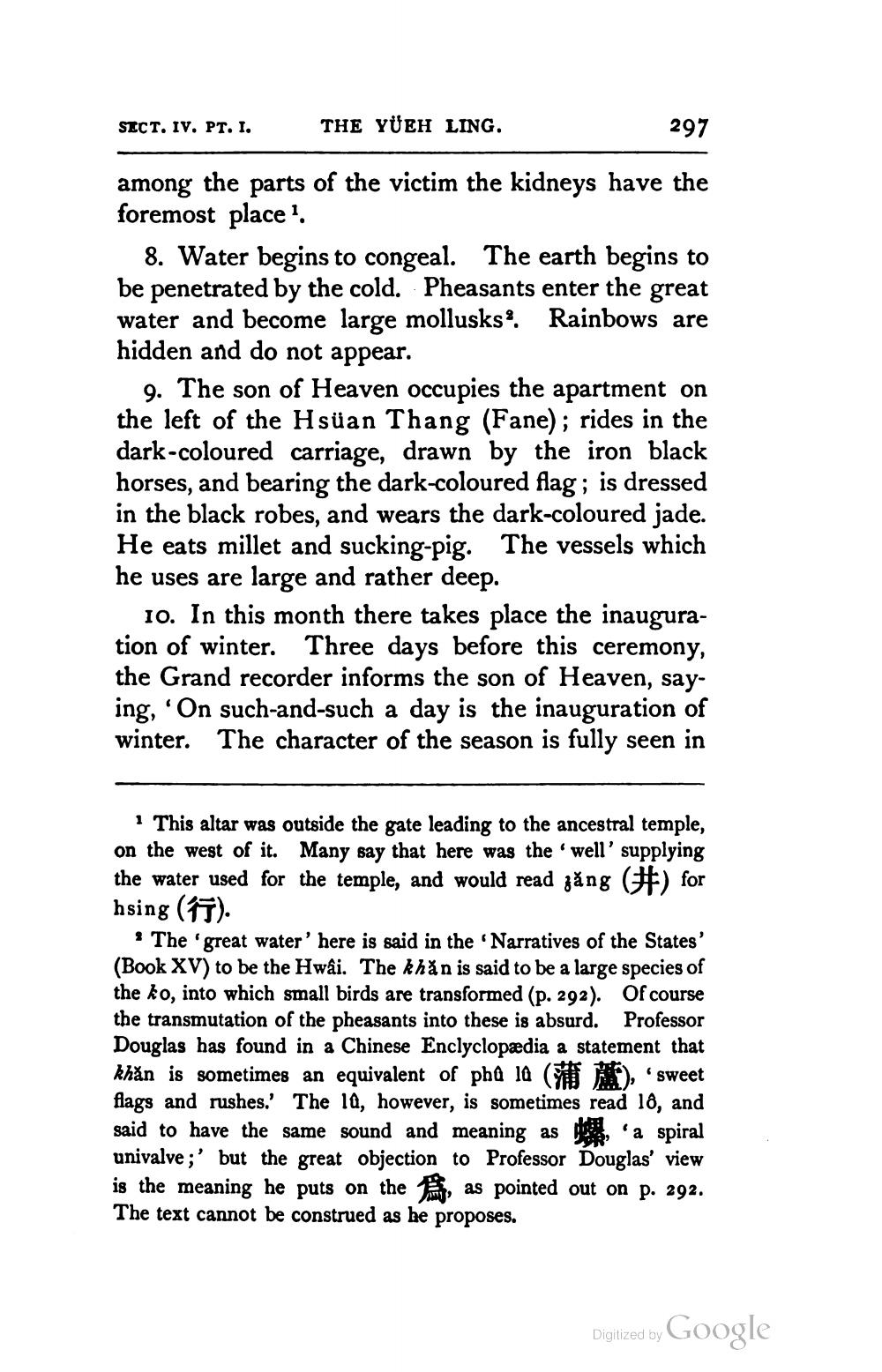________________
SECT. IV. PT. I.
THE YÜEH LING.
297
among the parts of the victim the kidneys have the foremost place.
8. Water begins to congeal. The earth begins to be penetrated by the cold. Pheasants enter the great water and become large mollusks. Rainbows are hidden and do not appear.
9. The son of Heaven occupies the apartment on the left of the Hsüan Thang (Fane); rides in the dark-coloured carriage, drawn by the iron black horses, and bearing the dark-coloured flag; is dressed in the black robes, and wears the dark-coloured jade. He eats millet and sucking-pig. The vessels which he uses are large and rather deep.
10. In this month there takes place the inauguration of winter. Three days before this ceremony, the Grand recorder informs the son of Heaven, saying, 'On such-and-such a day is the inauguration of winter. The character of the season is fully seen in
This altar was outside the gate leading to the ancestral temple, on the west of it. Many say that here was the 'well' supplying the water used for the temple, and would read zăng E!) for hsing (15).
. The great water' here is said in the Narratives of the States' (Book XV) to be the Hwai. The khăn is said to be a large species of the ko, into which small birds are transformed (p. 292). Of course the transmutation of the pheasants into these is absurd. Professor Douglas has found in a Chinese Enclyclopædia a statement that khăn is sometimes an equivalent of phở 10 ( ), sweet flags and rushes.' The 10, however, is sometimes read 18, and said to have the same sound and meaning as a spiral univalve ;' but the great objection to Professor Douglas' view is the meaning he puts on the , as pointed out on p. 292. The text cannot be construed as he proposes.
Digitized by Google




